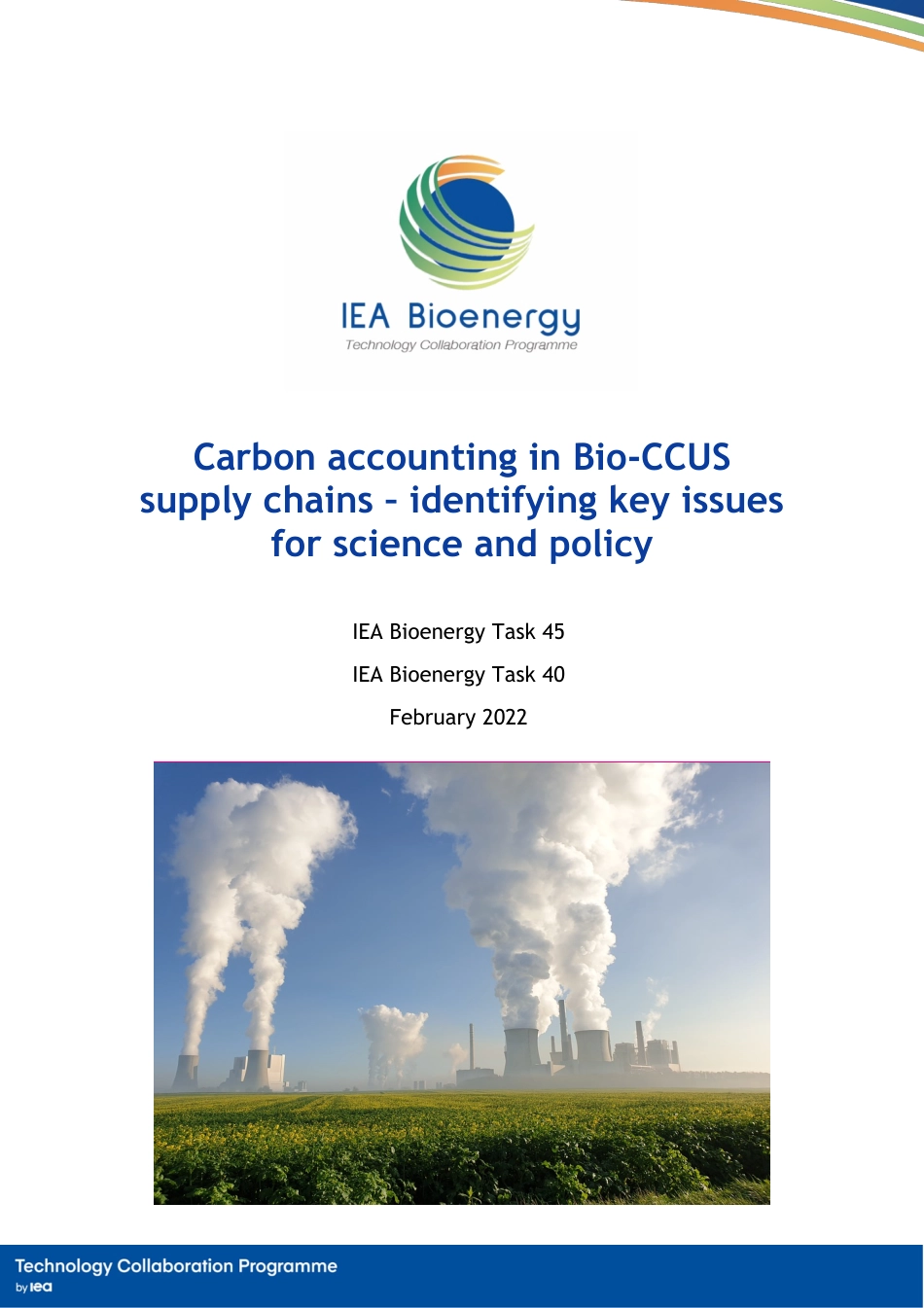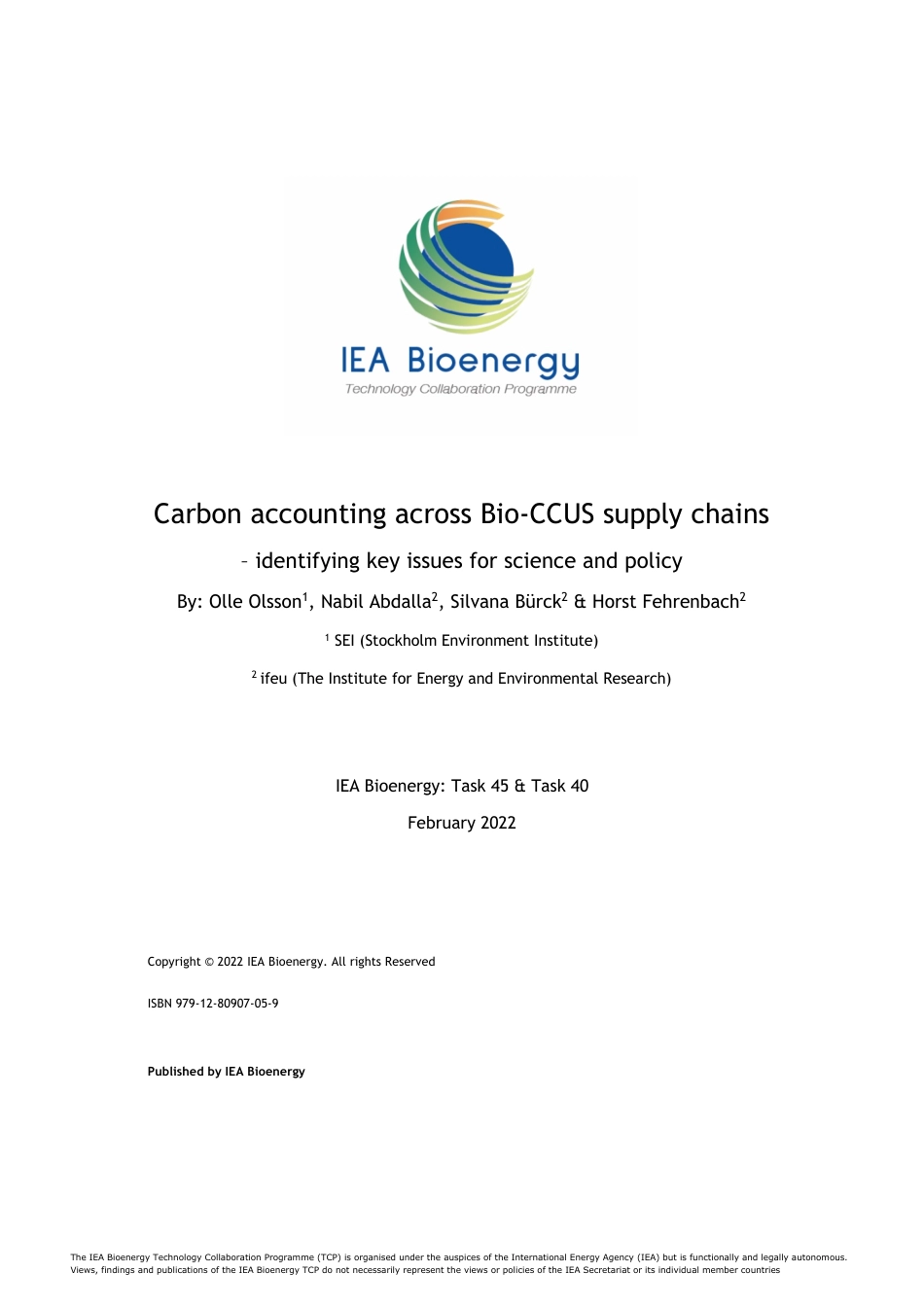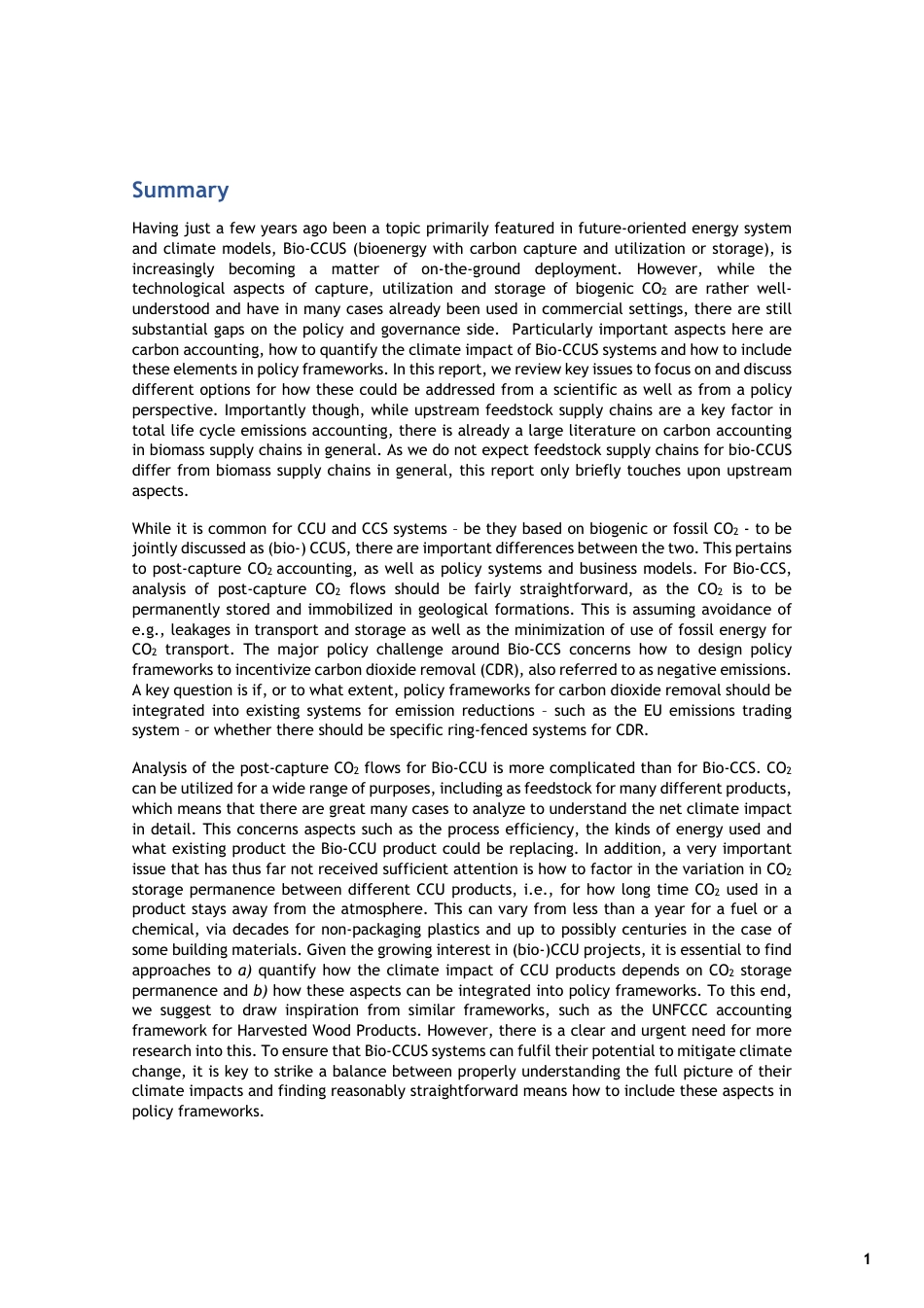Carbon accounting in Bio-CCUS supply chains – identifying key issues for science and policy IEA Bioenergy Task 45 IEA Bioenergy Task 40 February 2022 xxxx: xx IEA Bioenergy: Task XX Month Year xxxx: xx Copyright © 2022 IEA Bioenergy. All rights Reserved ISBN 979-12-80907-05-9 Published by IEA Bioenergy The IEA Bioenergy Technology Collaboration Programme (TCP) is organised under the auspices of the International Energy Agency (IEA) but is functionally and legally autonomous. Views, findings and publications of the IEA Bioenergy TCP do not necessarily represent the views or policies of the IEA Secretariat or its individual member countries Carbon accounting across Bio-CCUS supply chains – identifying key issues for science and policy By: Olle Olsson1, Nabil Abdalla2, Silvana Bürck2 & Horst Fehrenbach2 1 SEI (Stockholm Environment Institute) 2 ifeu (The Institute for Energy and Environmental Research) Title of publication Subtitle of publication Authors and / or acknowledgements here Edited by IEA Bioenergy: Task 45 & Task 40 February 2022 1 Summary Having just a few years ago been a topic primarily featured in future-oriented energy system and climate models, Bio-CCUS (bioenergy with carbon capture and utilization or storage), is increasingly becoming a matter of on-the-ground deployment. However, while the technological aspects of capture, utilization and storage of biogenic CO2 are rather well-understood and have in many cases already been used in commercial settings, there are still substantial gaps on the policy and governance side. Particularly important aspects here are carbon accounting, how to quantify the climate impact of Bio-CCUS systems and how to include these elements in policy frameworks. In...



